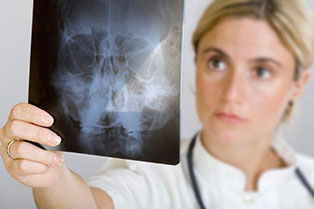Sign in

Please check your email address and password.
Navigation |
HealthcarePatient monitoring Patient monitoring involves the measurement and monitoring of a patient’s vital parameters. Patient monitoring is particularly important while the patient is anesthetized during an operation, in intensive care for critically ill patients, during medical examinations under sedation, or for other syndromes which require continued monitoring. Ubiquity as a requirement for patient monitoringThe hub (central computer of the patient monitoring system, usually a PC with single or dual graphics cards) is often located at the nurses station and is operated and monitored by the on-duty hospital staff. The increasing need to be able to perform these duties from alternative locations, such as the surgery or the lunch room, or even the corridors, requires new concepts from IT for the distribution of information. For this increasing need for ubiquity of information to access vital parameters of patients, various solution approaches exist. A functional approach is signal distribution by means of KVM extension and switching technology. The transmission of patient monitoring signals by means of KVM technology also contributes to improving safety. KVM extension and switching technologyEmploying receiver-transmitter units, KVM signals (keyboard, video, and mouse) are transmitted from A to B (point-to-point). The local control station at the nurses station remains to gain access to the patient monitoring system — additional monitoring stations can be connected accordingly. The solution transmits important audio signals as well, ensuring that all alarm calls are sent to the staff at every location. Additional monitoring stations can be added to the system by either cascading the KVM extenders or by integrating a KVM switch. AV extenders are sufficient for the mere transmission of video and audio (e.g. to display content in the corridors of the station). 
Solutions are available for either concept (KVM and AV extensions), for both analog (VGA) and digital (DVI, HDMI, Display Port) video signals. Black Box provides proven signal extension solutions for all transmission types – proprietary and via network topologies. For detailed expert advice on solutions for patient monitoring, please contact our free Tech Support. Type of data transmissionThe type of data transmission is often already determined by the existing on-site infrastructure. The KVM or AV solutions need to be distinguished between proprietary cabling (direct connect) and transmission via LAN (using the TCP/IP protocol as the transport layer). If new, additional CATx cables can be installed, using extenders over proprietary CATx cabling is a nice solution. It becomes more difficult, however, if there is no way to install new CATx cables (historic buildings, fire walls have reached maximum capacity, etc.) or if the costs involved are too high. In this case, high-performance KVM extenders are available which transfer relevant data smoothly over existing network cables, with all the advantages of TCP/IP (real-time transmission, virtually no restrictions with regards to distance) at your disposal. KVM solutions for patient monitoring |